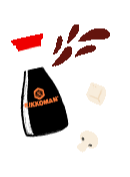

How to brew the perfect Soy Sauce
In the seventeenth century, soy sauce was produced completely by hand and was extremely difficult work. Today, soy sauce is produced in highly automated plants using cutting-edge technology – yet the core process of natural brewing hasn’t changed for centuries. 5 steps are needed to brew the perfect soy sauce.
Discover more














